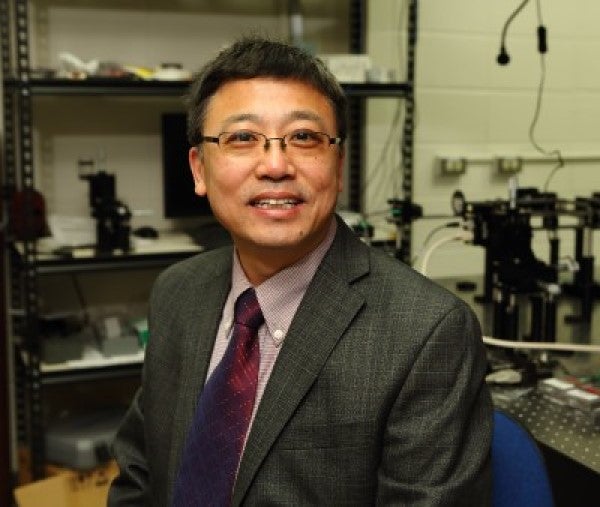Bioengineering and ophthalmology professors receive more than $1 million to develop affordable ultra-widefield fundus camera
Text One Heading link

Richard and Loan Hill Department of Bioengineering Professor Xincheng Yao and Ophthalmology Professor Robison P. Chan recently received approximately $1.87 million from the National Eye Institute of the National Institutes of Health to develop and fine tune a portable and more cost-effective device that can be used to screen and classify diabetic retinopathy (DR).
A study by the Centers for Disease Control and Prevention found that almost one-third of diabetes patients 40 years old and above have DR. This works out to 4.2 million adults with DR and 655,000 who had vision-threatening DR in the U.S. between 2005 and 2008.
Knowing that prompt screening and early diagnosis is critical in preventing visual impairment and blindness, Yao and his lab set out to create a portable pan-retinal imaging device that utilizes contact-free trans-pars-planar illumination for an ultra-wide fundus camera to capture the whole retina in a single-shot image.
“We have already demonstrated the feasibility in the lab, now we similarly need to take time to augment the design, to make the system user friendly, and to make sure the image quality is repeatable in clinical environments,” Yao said.
The new imaging equipment could also make the whole process for patients much easier as it removes the need for the patient’s pupils to be dilated. Yao said the scanner uses the whole available pupil for imaging purpose, which removes the need to pharmacologically dilate the size of the pupil.
“It will be quicker, safer, more comfortable without pharmacological dilation and it can even be cheaper,” Yao said.
He noted eye imaging machines on the market are either limited in how much of the retina they can actually cover within one image because they need to use part of the pupil to light up the retina or are expensive and not portable. His research found by freeing the whole pupil for imaging purpose, the trans-pars-planar illumination provides a unique opportunity to provide ultra-widefield coverage.
By lowering the cost and removing the need for pupil dilation, Yao is optimistic this device will allow other general health care providers to screen for DR, which will make a substantial impact on diabetes patients who need to be monitored, particularly those who live in rural and underserved areas where both expensive instruments and skilled operators are not available.
The grant, which started on Sept. 1, will run for four years. Chan is the clinical PI of this project. Felix Chau, associate professor of Ophthalmology and Devrim Toslak, visiting scholar of bioengineering, are also key investigators on this project.